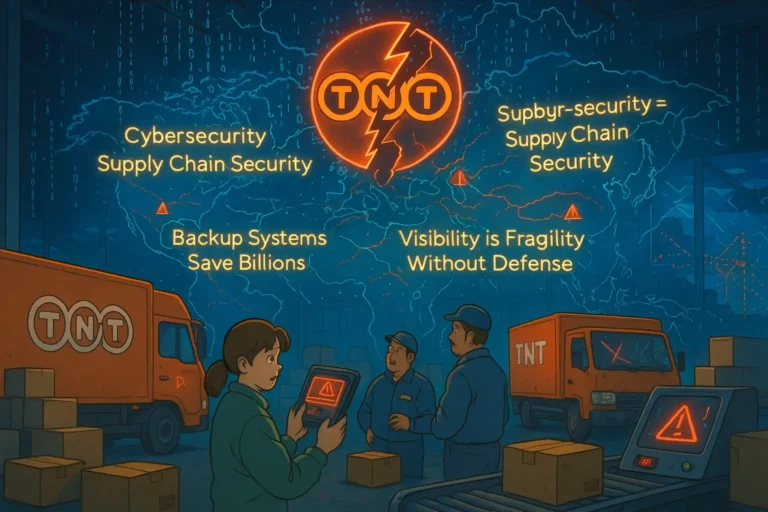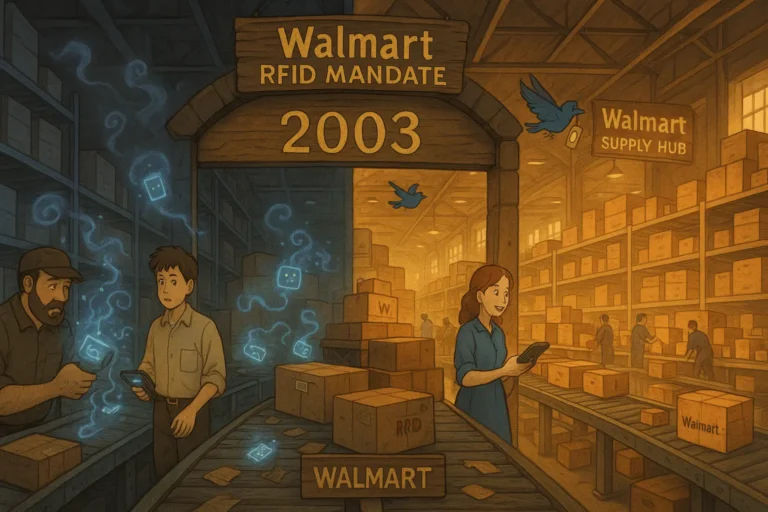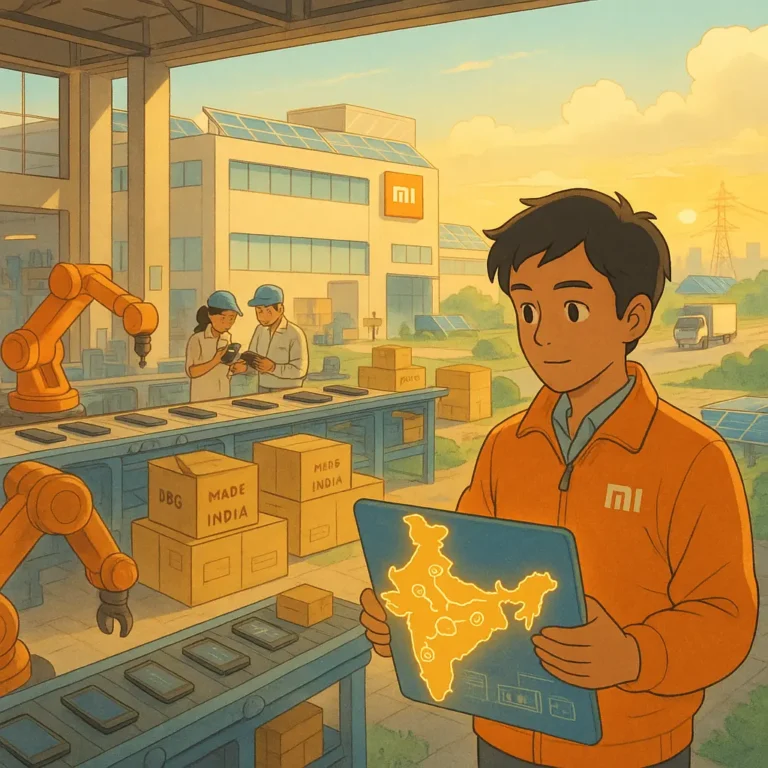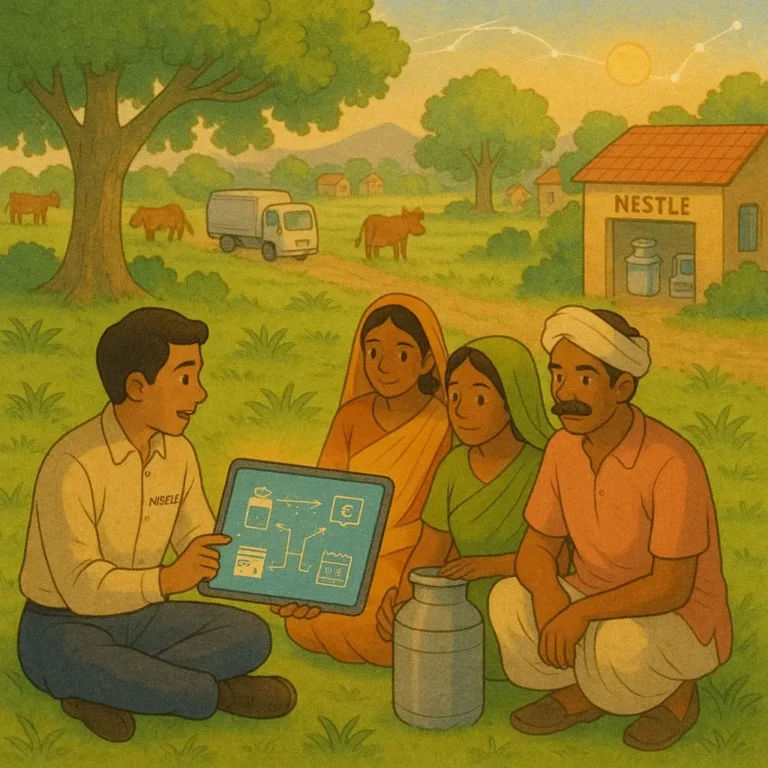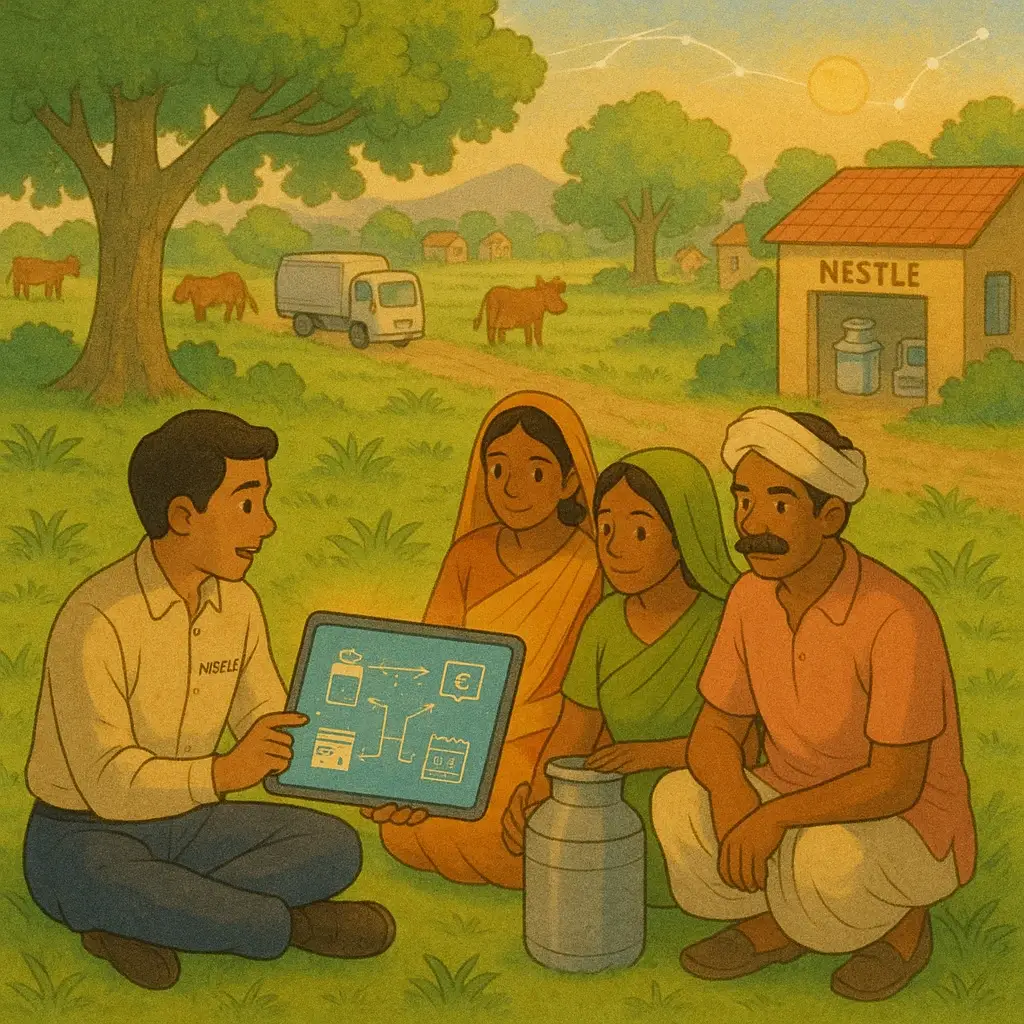
The success of Nestlé’s digital procurement platform for its dairy operations in India is proof of concept that a food supply chain can move faster when the first mile is clear and transparent.
In this piece, we explain why the shift occurred, its impact, and what supply chain leaders can learn from it.
Key Nuggets:
- Nestlé India switched to a digitized procurement platform to fix slow milk collection and weak visibility.
- But to achieve that, the company had to leverage IoT tools, digital slips, and GPS tracking to keep milk fresh and cut waste.
- The platform strengthened the entire Nestlé India dairy supply chain and improved transport planning.
- African supply chains can copy the focus on transparency, route discipline, and supplier engagement.
Background Story Behind Nestlé’s Digital Procurement Platform
Picture a large dairy operation riddled with guesswork and a lack of control.
That was Nestle India’s situation.
As of 2021, the company was collecting milk from more than 100,000 farmers each day. But the process relied heavily on a milk-district model established in the 1960s. It was a manual system that struggled to keep up with the scale of demand.
Collecting and processing milk about twice a day was a logistics nightmare.
Long queues at village collection points, handwritten entries, and scattered quality checks slowed movement and increased the risk of spoilage. The old system left farmers waiting for clarity on the quality of their products and the payment.
That actually made the farmers skeptical of the operation and the company. Milk is a fragile input, and delays raise the chance of waste.
To address this problem, Nestlé India sought a system that captured every gram, every reading, and every route with full clarity. It was a need that became urgent during pandemic lockdowns.
The solution was to adopt a digital procurement platform (AKA “Farmer Connect” program)
The visibility it provided was an instant hit.
During the pandemic, Nestlé India helped almost half of its suppliers adopt digital tools for payments and communication, clearing many longstanding bottlenecks and pushing the company toward full digitization across all milk districts.
This shift showed farmers the value of instant visibility at each sale and anchored the case for a full digital procurement platform.
Nestlé India’s Managing Director, Suresh Narayanan, described the shift in simple terms. He said the company “digitised the analysis and payment system,” adding that a farmer “gets an e-slip showing the fat content and SNF (Solids-Not-Fat) of the milk and is paid accordingly.”
Read More: Why Mattel’s 2007 Toy Recall Happened and the Impact
How Nestle Built A Digital Procurement Platform For Its Dairy Supply Chain
Nestlé India replaced its manual equipment with IoT-linked tools that measured milk weight, tested quality, and sent all readings straight to a central system.
Collection centers began using digital slips, enabling farmers to view quality metrics in real time. All milk analyzers, scales, and payment logs began feeding the same platform.
The company used an in-house solution—Global Milk Solution (GMS) to connect every collection point in the villages with the factories. With the solution, Nestle could link and analyze each farmer’s milk history, quality patterns, farm records, and transport activity.
Nestlé also added GPS tracking, enabling real-time visibility into tanker movement.
CSI Computech, one of the partners that helped build the digital layer, explained how this changed the flow of information. In their words, machine-captured readings removed “any scope for tampering,” which strengthened transparency.
The shift also meant new tariffs, quality thresholds, and instructions could reach every collection point with a simple wireless push, without waiting for paper updates or field visits.
This approach brought order to the digital milk procurement process.
Each delivery became a data point, and the platform stitched these points into a clear picture of volumes, routes, and factory needs.
Read More: Sustainability Lessons From the Rana Plaza Factory Collapse in Bangladesh.
The Impact Of Nestle India’s Digitized Procurement Platform on Milk Collection, Freshness, and Transport
Leveraging a digital procurement platform changed daily operations across Nestlé India’s dairy supply chain.
For starters, farmers hated the delays caused by the manual process. But with the digital platform, they could move through collection points faster because the testing and weighing were done in seconds.
That speed and transparency eliminated disputes and ensured farmers were paid quickly.
GPS tracking enabled drivers to avoid long delays, ensuring the milk was not left exposed for too long during hot hours. And since tankers no longer wasted time on poor routes, milk collection efficiency skyrocketed.
When supply rose in a village, the platform alerted planners early. This way, they could assign more tanks to match the volume of those locations, reducing waste and preserving freshness.
The platform cut waste in the transportation process through route improvements.
For example, tankers stopped making half-empty trips because supply chain planners knew the volume of milk each village had collected. That meant they could send trucks with the right capacity.
This also cut fuel consumption and freed time for drivers.
Leveraging digital procurement for its dairy operations enabled the factories to plan production with greater confidence. Quality teams gained a live view of fat and SNF levels across regions, allowing them to forecast output with more clarity.
Supporting farmers was so much easier.
As the platform stored every farmer’s history, extension teams could track patterns and advise farmers on feed, hygiene, and herd care. This improved quality at the source and helped farmers earn more income.
Do you want more supply chain stories like this? Subscribe here
Lessons From Nestlé’s Digital Procurement Platform
Nestlé’s digital procurement platform transformed its dairy supply chain, providing another example of technology’s impact on supply chains.
Lesson 1: End-to-End Digital Links Remove Blind Spots
Digitization worked because Nestlé India connected the entire first mile instead of just digitizing one corner of the process. That move gave Nestlé India a single view of all flows, which helped stabilize the network.
Lesson 2: Transparency Strengthens Supplier Trust
Farmers trusted the system because of transparency. They could instantly see key numbers, such as the milk’s fat content and SNF, which helped eliminate tampering. Your suppliers will gain more confidence in your systems when there is transparency and consistency.
Lesson 3: IoT Protects Quality
IoT solutions turned each center into a high-clarity station by automating milk testing, preventing disputes, and speeding up each sale. GPS tracking enabled faster route selection and reduced heat exposure during transit.
Lesson 4: Build Systems That Grow Without Friction
Nestlé India used a modular platform that supported new layers without requiring a complete overhaul of the entire setup. Today, its GMS platform now tracks routes, quality, carbon data, and payment flows.
This shows the value of choosing tools that grow with the supply chain rather than tools that restrict growth.
Lesson 5: Technology Works When People Understand It
For the digital procurement solution to work, Nestlé India had to invest in farmer awareness. The company explained the e-slip, trained farmers on digital payments, and helped suppliers adopt new tools during lockdowns.
Adaptation of digital solutions in the supply chain will gain momentum when users understand them. Without that, even the best tools will fail.
Lesson 6: Shared Progress Makes the Chain Stronger
Everybody won. Farmers earned more because of clarity, Nestlé reduced its losses by protecting freshness and minimizing wasted trips, and Consumers got safer milk powder due to stronger controls.
Read More: Lessons from NVIDIA’s Inventory Write-Down in 2018.
How African Supply Chains Can Apply These Lessons
The lessons may be universal, but in the African context, they may require some nuances to be effectively applied in supply chains. Here are some of those nuances
1. Ensure Clarity and Transparency
African supply chains that rely on small producers for products like milk, cocoa, cassava, maize, and fresh vegetables can follow the same approach. When data is clear, buyers gain a clearer view of daily output. This way, there is better planning and reliability.
Many African suppliers and supply chains struggle with disputes on weight, grade, or moisture. By ensuring transparency in the process, suppliers gain confidence.
2. Build Systems That Can Grow
African supply chains often expand fast once every stakeholder is clear on the benefits of the digital solution and how to use it. Choosing platforms that support new routes, centers, and products without major redesign saves time and costs.
Growth becomes easier when the system can stretch without breaking.
3. Take Suppliers Along and Focus on Shared Progress
Tech solutions in the supply chain work best when your suppliers trust and buy into them.
The Nestlé story shows that digital procurement brings stability across the supply chain when both the buyer and the producer benefit. African supply chains can gain the same strength by focusing on fairness during testing, faster payments, and better route planning.
Do you want more supply chain stories like this? Subscribe here

Obinabo Tochukwu Tabansi is a supply chain digital writer (Content writer & Ghostwriter) helping professionals and business owners across Africa learn from real-world supply chain wins and setbacks and apply proven strategies to their own operations. He also crafts social content for logistics and supply chain companies, turning their solutions and insights into engaging posts that drive visibility and trust.

